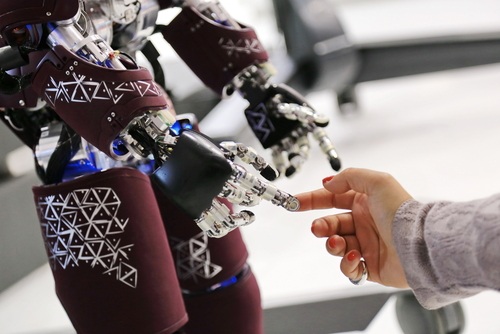Key takeaways
- AI-driven visitors convert 4.4 times more than traditional search traffic
- Digital marketing is shifting focus from traffic volume to traffic value
- Marketers must optimize content for AI engines to stay competitive
- A hybrid strategy combining AI and traditional SEO boosts long-term growth
AI-driven visitors: a new era in digital marketing
AI-driven visitors bring quality over quantity. As search engines add AI layers, they send fewer visitors but with stronger buying intent. Marketers once chased big traffic numbers. Now, they chase better traffic. This change offers deeper engagement and higher returns.
What makes AI-driven visitors different
Unlike simple keyword matches, AI engines understand context and intent. Therefore, they send users who really want what you offer. Also, AI systems learn from each search. Over time, this precision improves. As a result, your audience spends more time on your site and buys more.
Why value matters more than volume
In the past, high traffic numbers felt like success. However, many of those visitors bounced quickly. They often left without any action. Conversely, AI-driven visitors stay longer. They read multiple pages and interact with calls to action. Consequently, they boost your conversion rates and revenue.
How AI-driven visitors boost your conversion rates
When AI-driven visitors land on your site, they already know what they need. For that reason, they skip basic info and head straight to solutions. This behavior makes your offers more appealing. In fact, AI-driven visitors convert 4.4 times higher than traditional visitors. Moreover, they share content more often. That spreads your message and grows your audience.
Signs your site needs AI optimization
You may wonder if AI-driven visitors already find you. A drop in overall traffic but a rise in sales indicates AI impact. Also, longer average session times hint that AI engines like your content. If you see these signs, it’s time to adapt your strategy for AI-driven visitors.
Optimizing for AI-driven visitors
First, add clear headings that answer real user questions. AI engines scan headings to find the best answers. Second, use simple language and short sentences. This style suits both AI readers and human visitors. Third, include related terms and synonyms. AI engines use those to grasp context. Fourth, update old content regularly to keep it fresh. Freshness signals matter a lot to AI systems.
Balancing AI-driven visitors with organic traffic
While AI-driven visitors grow, traditional organic traffic still counts. Therefore, keep keyword research in your toolkit. Also, maintain quality backlinks and good site speed. These factors still influence AI engines. By blending both approaches, you enjoy steady growth and avoid risks from algorithm changes.
Creating a hybrid content strategy
A hybrid content strategy serves both AI-driven visitors and traditional searchers. Start by mapping topics that people ask AI engines most. Then, craft deep, original articles that cover every angle. After publishing, promote them via social media and email. This mix attracts AI systems and drives human shares alike.
Measuring success with AI-driven visitors
Track conversion rates, session duration, and pages per session. When these numbers rise, AI-driven visitors find value in your site. Moreover, watch your bounce rate. A falling bounce rate means visitors engage more deeply. Because AI-driven visitors act differently, compare them separately from regular traffic.
Preparing for the future of AI-driven traffic
AI in search will keep evolving. Soon, AI engines may use voice previews and chat suggestions. To stay ahead, practice continuous testing. Also, experiment with new content formats, like interactive quizzes or videos. In time, these innovations will satisfy both AI-driven visitors and traditional audiences.
Making your site AI-friendly today
You don’t need a huge team or budget. Start small by reviewing your best pages. Rewrite them with clear, helpful answers. Then, use data to see what works best for AI engines. Over weeks, expand these tactics to other parts of your site.
Conclusion
AI-driven visitors are more focused, more engaged, and more likely to convert. Therefore, shifting from traffic volume to traffic value makes sense. By optimizing for AI engines and keeping classic SEO practices, you build a durable strategy. Ultimately, a hybrid approach means steady growth and stronger results in the AI era.
FAQs
What are the main benefits of AI-driven visitors?
AI-driven visitors offer higher conversion rates, longer session times, and deeper engagement. They come ready to act, which boosts your sales and ROI.
How can I optimize my content for AI-driven visitors?
Use clear headings, answer real user questions, write in simple language, and include related terms. Also, update content often to signal freshness.
Will traditional SEO still matter after AI-driven visitors rise?
Yes. Core SEO factors like site speed, backlinks, and valuable content remain vital. Blending AI focus with proven SEO ensures balanced growth.
How soon will AI-driven visitors outpace organic traffic?
The shift is already happening in some niches. However, it depends on your industry and content quality. Start optimizing now to lead the change.

